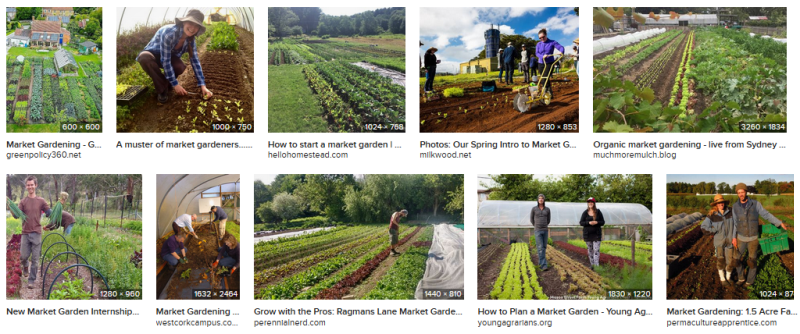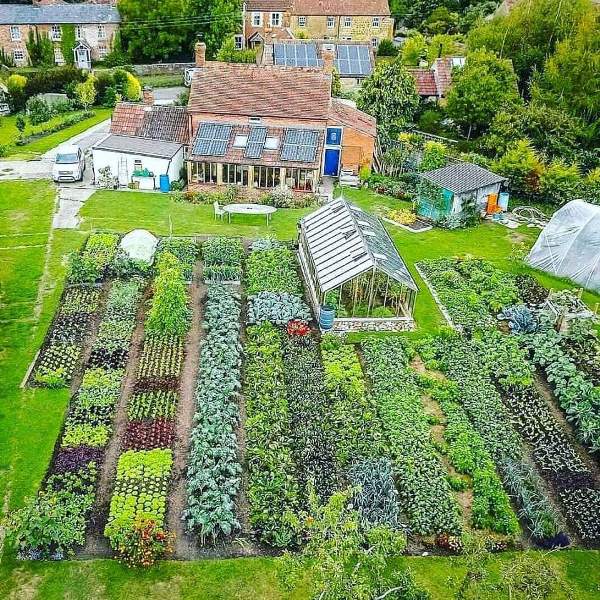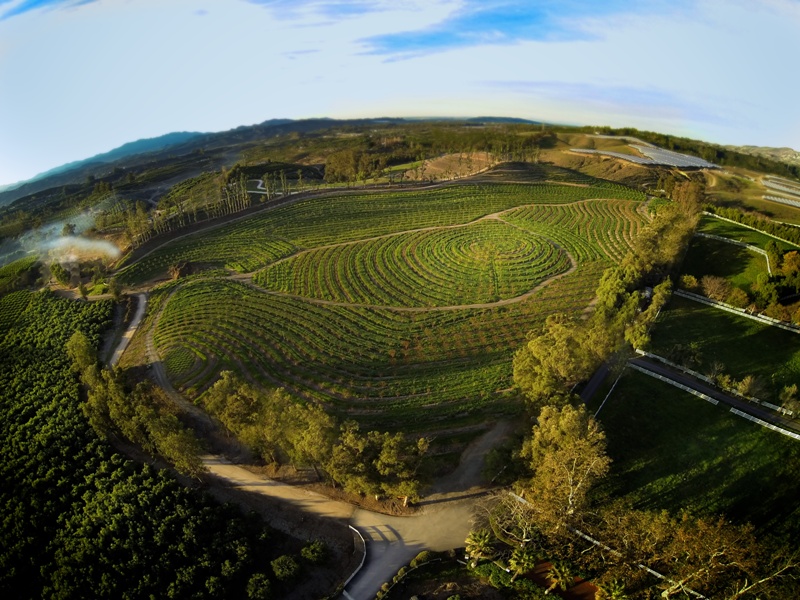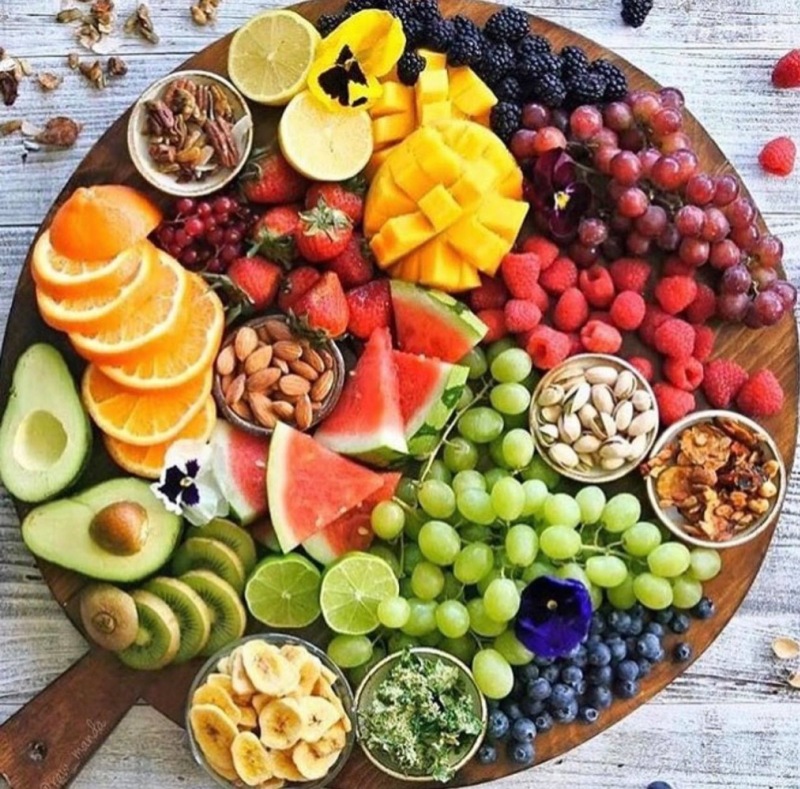Market Gardening: Difference between revisions
Siterunner (talk | contribs) No edit summary |
Siterunner (talk | contribs) No edit summary |
||
| Line 197: | Line 197: | ||
[[File:Via Dr Stacey Robinson.JPG]] | [[File:Via Dr Stacey Robinson.JPG]] | ||
<small>Photo from Stacey Hotchkin Robinson, M.D.</small> | |||
<small>St. Petersburg, Florida</small> | |||
<small>Author of '''Road Map to Health'''</small> | |||
<small>* https://www.amazon.com/Road-Map-Health-Steps-Destination/dp/0692527729</small> | |||
Revision as of 13:23, 4 March 2023
Market Gardening, Farm-to-Table & Farmers Markets Are Here & Now
Join in the Green 'Food Best Practices' Movement
Steve Schmidt (SJS) / Siterunner: Back in the early 1990's, when I was working with Seeds of Change, starting up the [http://www.bioneers.org) Bioneers and its pioneering 'Bioneering', we launched a series of publishing ventures. Our goals included bringing food, politics and health together. We spoke and wrote of biodiversity and organic/heirloom food production, the importance of seed saving/co-evolution, and importance of fresh, healthy food.
We introduced many ideas for a diverse green agriculture, organic food production and fresh food for healthy lifestyles. Our environmental book publishing set new records as we toured across the country and reached out to many who found our work life changing.
Our Bioneers "Seeds of Change" book, work with market gardens, biodiversity 'evangelizing', pushing heirloom seed saving and organic food production, 'aiding and abetting' new 'fresh and seasonal' practices, chefs, restaurants and culinary friends from Michael Pollan to Deborah Madison -- we were all presenting what came to be called a "New American Cuisine". Our aim, at Bioneers, was to provide smart, healthy, tasty, sustainable and empoweringfood alternatives, green alternatives to petrochemical-based inputs and pesticide heavy 'Big Ag' industrial systems.
We helped to popularize a food movement toward wellness, healthy, taste and best food practices. We revealed, in detail, how conventional agriculture with its industrial-size production methods, over-use of water and aquifer depletion, soil loss over time, and petrochemical fertilizer regimes with pesticides/herbicides/miticides/fungicides and varied health-threatening inputs comprises a deeply damaging problem.
We spoke of Regenerative Agriculture and Permaculture.
We spoke of permaculture and dirt...
"Don't look down at the dirt -- it's much more than 'dirt'"
- https://www.greenpolicy360.net/w/Category:Soil
- https://www.greenpolicy360.net/w/Soil_Loss
- https://www.greenpolicy360.net/w/Microbiomes_at_Risk
We spoke of water -- and 'water is life'. Aquifers, Wetlands, Watersheds ... how to protect and save water.
We went 'into the weeds' too, with pioneering books in association with friends and movement groups across communities worldwide.
* https://www.greenpolicy360.net/mw/images/Harvest_the_Rain_reviews.png
We chose to challenge the prevailing conventional agriculture with its large-scale food production/distribution chain, and standard restaurant/corporate food suppliers model, and ubiquitous supermarket name brands/home kitchen model. Our work was 'front-of-market' and Seeds of Change led the way as healthy foods became a powerful force in American lives. Over the past 20 years much has changed at every level in the US food industry. Much has changed for the better.
In the early- and mid-90s the phrase I felt was ripe to use as we produced our books and tours, conferences and events, and spread a better way, better foods message, was "peak of the season". So I'm adding it again here at GreenPolicy360 in 2015.
The idea of fresh food, good food and sustainable, healthy production remains important today in the US -- and worldwide. Peak of the season is a message for the times, being in tune and being in touch with what is best for biodiversity, good food and wellness. The notion of "peak of the season", as I often spoke of food, taste, health and well-being, is a choice, choosing what is best when you have a choice to make about what you're eating...
In a peak-of-the-season way, we would consciously choose to eat in a 'farm-to-table' way, selecting what is healthy and, if possible, what is best seasonally from the local producers.
In agri-production at the local level, choices should include seed-saving, choosing what are the best seeds (allowing the healthiest, most undamaged-by-insects, flourishing varieties of crops to 'go to seed' and saving these seeds)... Over generations this 'co-evolution' selection has carried forward adaptation and next generation healthy/best tasting varietals... The wisdom of generations of producers, improving their farming with what we now call heirloom seeds, is there in the fields today and the next time you choose a particularly tasty variety of apple (almost inevitably not a hybrid, industrially produced variety), you are supporting farm-to-table. You are enabling growers to sustain "farm-to-table" that flourishes and you are improving the quality of your life and your community's well-being.
When you go to the next step and choose organic and 'natural' products at your local store, or farmers market, or in your family choices for a healthy diet, the wellness benefits are real. When you choose seasonal produce, locally grown, you are often choosing peak of the season...
A 'New American Cuisine'
The exceptional retail stores, restaurants, and local suppliers who see that 'naturally produced' and 'fresh ingredients' is a trend to follow for market success are offering the pick of the select choices today. The best way to go is for you (not your grocery store's buyer) to choose what's best for you and your family. Traditional grocery chains and all food retailers with forward-looking plans are responding to market pressure for quality, healthy, and special, seasonal food opportunities. Be choosy and 'think seasonal' to help this trend along.
Here's an example of our Grn appreciation of peak of the season. Our Florida Strawberry festival season (GreenPolicy's terrestrial home is located in Clearwater, Florida) --- Next up, Florida's local Blueberry season!
Eat healthy, be healthy (and seasonal, best selections from your local food growers tastes the best) -- 'Nuff said.
Market Gardens/Farmers Markets/Farm-to-Table/Alternative Agriculture
Local, better tasting, fresher, healthier -- market garden varieties/farmers market food/fresh-to-restaurant and -kitchen and to your table
Farmers’ market food tastes better, simple as that. But that’s not the only reason you should start hitting up your weekly market as much as you can. Whether you care about your health or the health of the planet, there are dozens of reasons to support local farmers, including buying vegetables that have higher antioxidant levels and haven’t been fumigated with toxic chemicals. When you buy organic fruits and vegetables, you’re supporting less-toxic food production and could even save a farm or two, all while getting the best-tasting food you can find. -- http://www.rodalesorganiclife.com/
Market Gardening; Farmers Markets; Gardens-to-Table; Peak-of-the-Season; Green Best Practices; Soil Regeneration; Advancing Horticulture; Organic Growing; 'No Dig' Agriculture; Composting, Propagating, Germinating; Planting and Growing Seedlings
+ + + + + + + + + +
Visit a Market Gardener in the Field
No-dig Gardening by Charles Dowding
https://www.facebook.com/charles.dowding -- https://www.youtube.com/channel/UCB1J6siDdmhwah7q0O2WJBg/videos -- https://www.wfga.org.uk/product/somerset-no-dig-workshop -- https://www.youtube.com/watch?v=Kf6CGj7xpFE -- https://www.youtube.com/watch?v=OXR92xHfgic
+ + + + + + + + + +
Market Gardening
+ + + + + + + + + +
Tomatoes
Surprised? Probably not. A bland, mealy grocery-store tomato will never rival a fresh-from-the-farm-market tomato. And there are more benefits to local tomatoes than just taste. In Florida, where a third of the country’s fresh tomatoes are grown, slavery of illegal immigrants on tomato farms is a persistent problem. And farmers in that state apply five times as much fungicide and six times as much pesticide as farmers in California, which supplies another third of the country’s fresh tomatoes.
Carrots
You’ll never find anything but standard orange carrots at a supermarket, but you’ll find them in every hue, from purple to white, at local farm stands. Those colorful varieties, particularly purple carrots, have higher antioxidant values than commercially grown orange carrots, according to a study in the Journal of Agriculture and Food Chemistry. They’re also better for the planet. The energy required to store carrots when they’re out of season or being shipped long distances accounts for 60 percent of the greenhouse-gas emissions associated with carrot production.
Berries
Grab a pint of local strawberries, blueberries, or raspberries, and you’re doing the planet a favor. Because they perish quickly and have relatively short shelf lives, berries are often shipped from farm to distribution center via air freight, the most fossil-fuel-guzzling form of food shipment, from South America, Mexico, Canada, and even as far off as Poland. You’re also doing domestic growers a favor: According to Food & Water Watch, the United States imports $220 million worth of strawberries, while selling just $1.5 million worth of domestically grown berries.
Onions
Oddly enough, buying local onions could help save a farm. A few years ago, the U.S. government loosened trade restrictions with Peru, and the result has been a glut of imported onions that has dropped the price local farmers can get for their crops by half. As a result, domestic onion growers have slowly been cutting back on the number of onions they grow. All of Peru’s onion exports aren’t doing farmers there any good, either. The primary pesticide used on Peru’s onion crops, methamidophos, has been linked to sperm damage in farmers.
Asparagus
Sales of this crop have also benefited from our neighbors to the south. Asparagus imports from Peru have grown steadily over the past decade and now account for 51 percent of the asparagus we consume. The vegetable is now Peru’s largest agricultural export. The USDA requires all shipments of fresh asparagus from Peru to be fumigated with the dangerous pesticide methyl bromide, a neurotoxic chemical suspected of causing cancer. If that’s not bad enough, the chemical shortens asparagus’s shelf life, so it doesn’t even taste good by the time it arrives at the store! The best-tasting stalks are at the farmers’ market, even if the asparagus season is fleeting.
Peaches
Domestic, imported. Organic, nonorganic. Peaches just don’t taste good any other time of year than in midsummer, the height of their season, because they don’t hold up well during transport. Another benefit to buying local? Pesticides. According to the Environmental Working Group’s Shoppers Guide to Produce, peaches are treated with more pesticides than any other fruit. Buying local means you can grill the farmer to see which chemicals, if any, he or she uses.
Anything Organic
Despite the feel-good factor of supporting local farms, where your food is grown accounts for just a fraction of its environmental impact. It’s how your food is grown that matters most. According to a pair of Cornell agricultural researchers, 11 percent of your food’s environmental impact comes from food miles, whereas 83 percent comes from how it was grown, particularly when it’s grown with the greenhouse-gas-intensive fertilizers and pesticides used on chemical farms.
Grass-fed beef and dairy
Like organic food, the environmental impact of animal products has more to do with how they were raised than how far they traveled — which is why buying local beef and dairy is important. Animals raised entirely on grass produce 8 percent fewer greenhouse gas emissions and 30 percent lower ammonia levels than corn-fed animals raised in confinement. Since the term grass-fed isn’t always reliable (it’s not well regulated), local venues allow you to ask farmers direct questions about how their animals were raised.
+ + + + + + + + + +
Healthy Diet, Healthy Lifestyle, Healthy Living
'Food is Medicine' - https://www.fimcoalition.org/
Hippocrates is credited with the famous quote, "Let food be thy medicine and medicine be thy food"
Photo from Stacey Hotchkin Robinson, M.D.
St. Petersburg, Florida
Author of Road Map to Health
* https://www.amazon.com/Road-Map-Health-Steps-Destination/dp/0692527729





